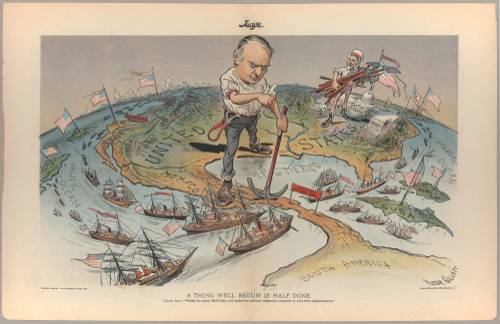
FAQ About The Influence of Satirical Cartoons in Modern Political Discourse

What is a satirical cartoon?
A satirical cartoon is an illustration or comic strip intended to provide commentary on current events or social issues through the use of humor, irony, and exaggeration. These cartoons often highlight the absurdities or flaws in political decisions, public figures, or societal norms, serving as a form of critique and entertainment.

How do satirical cartoons influence political discourse?
Satirical cartoons influence political discourse by challenging authority and provoking thought. They can simplify complex issues, making them accessible to a broader audience, and encourage public reflection and discussion on political matters. These cartoons can sway public opinion by highlighting the weaknesses or contradictions in political agendas or behaviors.

What are some historical examples of influential satirical cartoons?
One famous example is Thomas Nast's cartoons in the 19th century, which played a significant role in bringing attention to political corruption in New York City. Another is the cartoons by Herb Block, also known as Herblock, during the 20th century that criticized McCarthyism and various administrations in the United States.

Why are satirical cartoons an effective medium for political commentary?
Satirical cartoons are effective because they use visual imagery to communicate complex messages quickly and can evoke strong emotional responses. The use of humor and irony allows them to criticize power structures in a manner that is both entertaining and insightful, making them more likely to engage audiences.

How do satirical cartoons fit within the broader context of media and journalism?
Satirical cartoons are a component of news media and journalism, offering unique perspectives that complement traditional reporting. They provide commentary and critique, encouraging readers to question the status quo and think critically about news stories and public figures.

Can satirical cartoons impact public opinion?
Yes, satirical cartoons can impact public opinion by exposing societal issues and political inconsistencies. By resonating emotionally or intellectually with viewers, they can shift perceptions and prompt discussions, thereby influencing how audiences perceive certain events or leaders.

What role do satirical cartoons play in election campaigns?
During election campaigns, satirical cartoons often highlight the promises, hypocrisies, and personalities of candidates. They can play a role in shaping voters’ perceptions by drawing attention to the aspects of candidates' platforms or behaviors that might otherwise be overlooked.

How do cultures differ in their use of satirical cartoons?
Cultures differ significantly in how they use satirical cartoons based on their political environments and social norms. In some democracies, such cartoons are a crucial part of free expression and public discourse. In more restrictive regimes, they can be a form of clandestine dissent. The subjects and styles of satire can vary widely to reflect cultural specifics.

Are there any legal or ethical issues associated with satirical cartoons?
Satirical cartoons can face legal challenges related to defamation, obscenity, or hate speech, especially if they offend certain groups or individuals. Ethically, they must balance free expression with potential harm or mischaracterization, leading to debates about what constitutes acceptable satire.

How have digital platforms changed the impact of satirical cartoons?
Digital platforms have amplified the reach of satirical cartoons, allowing them to go viral and reach global audiences instantly. This increased accessibility has heightened their potential to influence public opinion and has also led to more rapid dissemination of controversial content.

What are some famous platforms known for publishing satirical cartoons?
Famous platforms for satirical cartoons include newspapers and magazines like The New Yorker, Charlie Hebdo, and Private Eye. Additionally, online platforms and social media have become popular spaces for distributing and sharing satirical content through channels like Instagram, Twitter, and websites like The Onion.

How do satirical cartoonists choose their subjects?
Satirical cartoonists often choose subjects based on current events, political developments, or social issues that they believe are important or ripe for commentary. They may select topics that will resonate with their audience, provoke thought, or highlight contradictions in societal behavior or policy.

What are the challenges faced by satirical cartoonists today?
Satirical cartoonists face challenges including censorship, backlash, and sometimes even threats, especially when their work tackles sensitive or controversial topics. Additionally, the rapid news cycle and digital consumption habits demand quicker responses and are pushing cartoonists to adapt constantly.

Can satirical cartoons be misleading?
While satirical cartoons are based on real events or issues, their exaggerated and comedic nature can sometimes lead to misunderstandings. Viewers unaware of the context might misinterpret the irony or exaggeration, potentially spreading misinformation.

Do satirical cartoons have educational value?
Yes, satirical cartoons possess educational value by encouraging critical thinking and awareness of political and social issues. They can be used in academic settings to spark discussion, analyze media literacy, and explore the boundaries between humor and offense.

How do governments typically react to satirical cartoons?
Government reactions to satirical cartoons vary widely. Democracies may protect them under free speech laws, while authoritarian regimes might censor or punish cartoonists, viewing the cartoons as a challenge to their authority.

What is the role of satire in democracy?
In democracies, satire plays a crucial role by scrutinizing power and encouraging public dialogue. It serves as a watchdog, highlighting issues such as corruption, inefficiency, and injustice, thereby contributing to a more informed and engaged citizenry.

Can satirical cartoons transcend cultural boundaries?
Satirical cartoons can transcend cultural boundaries by addressing universal themes such as power, corruption, and hypocrisy. However, cultural nuances might affect how different audiences interpret the satire's language, symbols, and humor.

What are the ethical considerations in creating a satirical cartoon?
When creating a satirical cartoon, ethical considerations include balancing the freedom to critique with respect for individuals and communities, avoiding harm or reinforcing negative stereotypes. Cartoonists must consider the cartoon's potential impact and the context within which it will be received.

How can satirical cartoons be used as a form of resistance?
Satirical cartoons can be a form of resistance by voicing dissent and criticizing oppressive regimes, often conveying messages that might be censored in traditional media. They enable people to express grievances and foster solidarity among those challenging the status quo.
